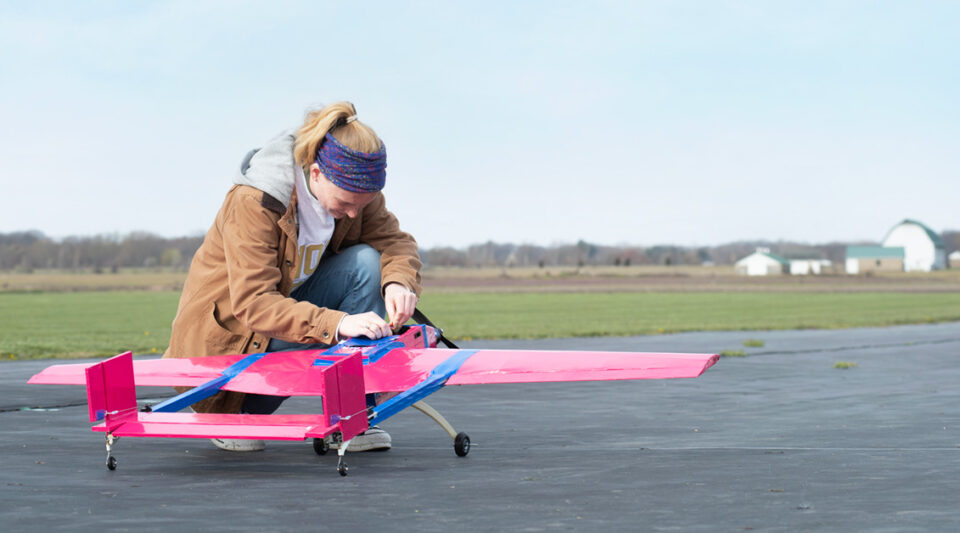When the farm fields surrounding the airstrip in Bremen, Indiana, were still untouched by green, Notre Dame seniors in Aerospace Design awaited their turn to subject their carefully crafted radio-control planes to the relentless force of gravity and the capricious winds of spring.
Each of the 8 student teams had the same mission: a quick take-off followed by two laps around an aerial racetrack, including two 180-degree and one 360-degree turns. Shorter take-off distances, faster lap times, larger payloads (golf balls), demonstrations of agility, and lower construction costs contributed to higher scores.
The airstrip is owned by the South Bend Radio Control Club (SBRC) whose members have provided mentorship to the class for the past 28 years.
“Each team decides which attribute—speed, carrying capacity, maneuverability—to emphasize,” said Hirotaka Sakaue, associate professor in aerospace and mechanical engineering.




“This year, we added the category of design. The students have to use science, engineering, technique, and know-how to bridge the gap between the design in their imaginations and a real, flyable machine.”
Design elements have distinct aerodynamic advantages and disadvantages. The team whose plane featured a twin boom tail—two beams bracketing a rectangle of empty airspace between tail and fuselage—could carry a large payload but had limited maneuverability.

One team incorporated sophisticated servo-driven retractable landing gear into their plane but found the gear attachment point too vulnerable to stress. They added wheels to the wingtips to mitigate the problem.
Inspired by the past, one team built a World War I-style biplane, breaking with tradition by making it canary yellow. The dual wings added lift but made integration with the fuselage difficult.


Another team built a canard—a plane with both wings and engine mounted at the back. While most radio-control planes have electric motors that pull the aircraft forward, a canard’s motor pushes the plane from the rear, similar to the thrust provided by a jet engine.
“Placing the center of gravity in the canard was a challenge,” said senior aerospace major Caleb Eisenbacher. “Most of our heavy components—motor, electronic speed controller, battery—were at the back of the plane, so we had to fit more payload in the front and move most of the heavy electrical components forward with extension cables.”
Careful design and construction during the months prior to the flight tests did not eliminate the need for creative problem solving on-site.


“Things were sketchy at first because there was too much weight in the tail portion of the plane,” said senior aerospace major Thomas Baldwin, whose team used a fighter-jet style, inverted Y-tail design.
“Luckily, we found some extra weight—actually a few rocks from the airfield’s parking lot—which we added to the front to create a stable configuration. From that point on, we amazed with our tight turns and our record-setting 52 golf-ball flight!”

— Karla Cruise, Notre Dame Engineering; Photos by Wes Evard, Notre Dame Engineering
